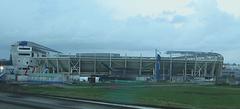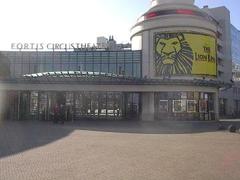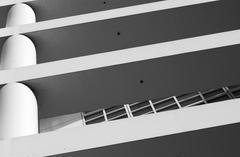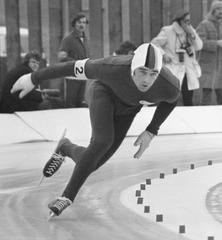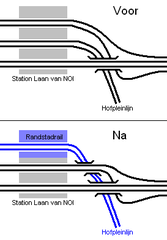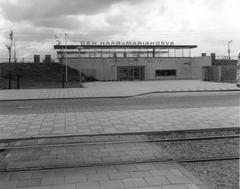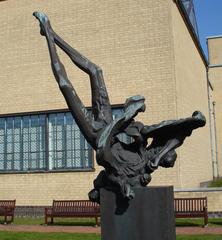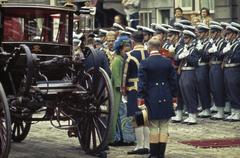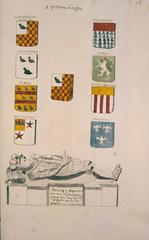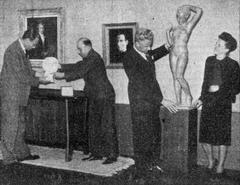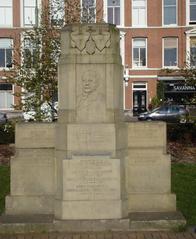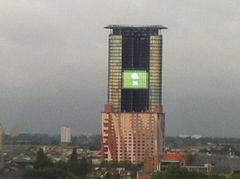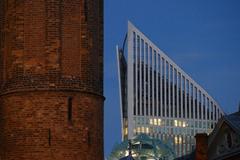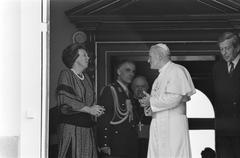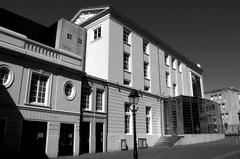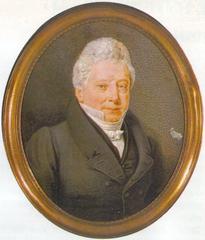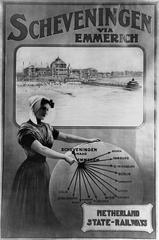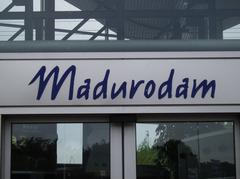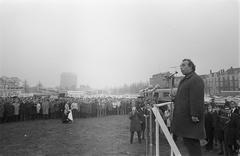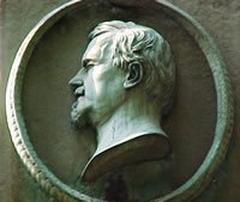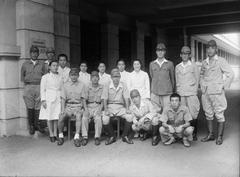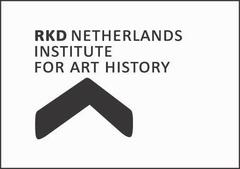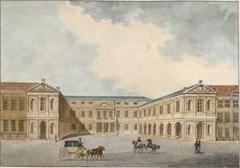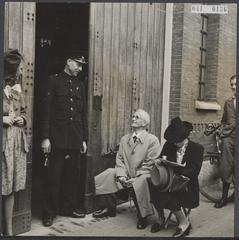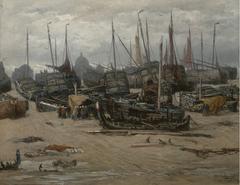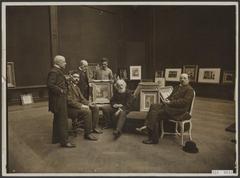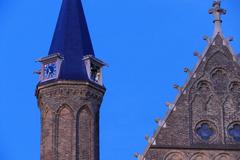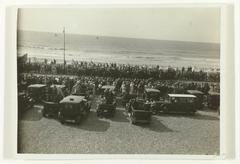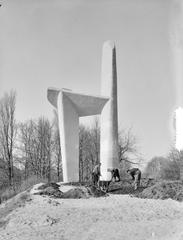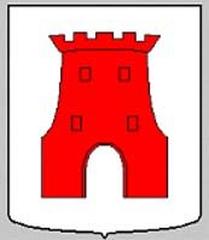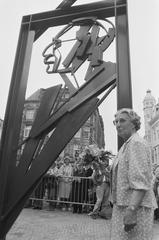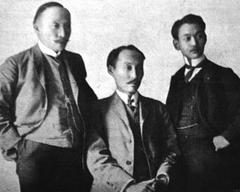Watertoren The Hague: Visiting Hours, Tickets, and Historical Sites Guide
Date: 04/07/2025
Introduction
Nestled in the vibrant cityscape of The Hague, the Watertoren is an enduring monument to Dutch ingenuity, urban transformation, and architectural distinction. Built in 1874, this iconic water tower stands as one of the Netherlands’ oldest surviving examples of industrial heritage, reflecting The Hague’s evolution during the industrial revolution and its pivotal strides in public health and urban infrastructure. The Watertoren’s neo-Gothic-industrial design, robust brickwork, and strategic location in the Scheveningen district make it a must-see for history enthusiasts, architecture admirers, and travelers seeking to understand the city’s development. As a preserved national monument, the tower encapsulates The Hague’s commitment to integrating historical architecture into modern urban life, while the surrounding area offers a wealth of attractions for a well-rounded visit (Den Haag Municipality, Master Urban Resilience).
This guide provides detailed information on the Watertoren’s visiting hours, ticketing, tours, accessibility, and top nearby attractions, along with practical travel tips and recommendations for making the most of your journey to this remarkable Dutch landmark (DenHaag.com, TheWalkingParrot.com).
Table of Contents
- Introduction
- Historical Background
- Visiting Watertoren The Hague
- Top Nearby Attractions
- FAQ
- Conclusion
- References
Historical Background
Origins and Construction
The Watertoren in The Hague was constructed in 1874 in the Scheveningen district, designed by architect Jan Schotel. Rising nearly 49 meters, its cylindrical brick and stone structure was a crucial component in the city’s move toward a centralized, hygienic water supply. Before its construction, The Hague relied on wells and canals, which were prone to contamination and disease. The tower enabled the piped distribution of clean, pressurized dune water to the rapidly expanding city, marking a turning point in public health and urban modernization (Den Haag Municipality, Master Urban Resilience).
Architectural Significance
The Watertoren’s design exemplifies a blend of 19th-century industrial practicality and neo-Gothic ornamentation. The cylindrical form, arched windows, and decorative brickwork create a visually striking profile, while the internal reservoir—once holding up to 1,000 cubic meters of water—was engineered to withstand the weight and coastal winds. The tower’s silhouette quickly became a symbol of civic pride and modernity for The Hague (DenHaag.com).
Urban Development and Water Management
The water tower was central to The Hague’s development during a period of rapid urban expansion. By ensuring a reliable water supply, it made construction of multi-story buildings possible, improved fire safety, and helped reduce waterborne diseases. The Watertoren was part of a broader Dutch tradition of sophisticated water management, integrating with a national network of dikes, canals, and later, initiatives such as the Delta Works (Stories of Purpose, Facts.net).
Preservation and Adaptive Reuse
With advances in water technology, the tower’s original function became obsolete. Recognizing its historical and architectural value, The Hague preserved the Watertoren as a national monument (Rijksmonument). Restoration efforts have focused on maintaining original materials while ensuring safety. Today, the Watertoren is occasionally opened for guided tours, special events, and art exhibitions, reflecting its adaptive reuse as a cultural venue (Den Haag Municipality, MyTravelation.com).
Visiting Watertoren The Hague
Hours and Ticket Information
- Regular Access: The Watertoren is not open daily but welcomes visitors during special events, cultural festivals, and guided tours—typically on select weekends or during national Open Monument Days.
- Hours: Most public openings occur between 10:00 AM and 5:00 PM; however, schedules vary seasonally.
- Tickets: Entry is generally free or available for a nominal fee (€5–€10) during events. Advance booking is recommended due to limited capacity and high interest.
- Booking: Check the Den Haag Tourist Office or DenHaag.com for up-to-date schedules and ticket reservations.
Tours and Special Events
Guided tours provide insights into the tower’s history, engineering, and cultural significance. Special events may include art exhibits, educational programs, and occasional access to upper levels with panoramic views of The Hague and the North Sea (TheWalkingParrot.com, MyTravelation.com). Advance booking is essential for these limited-access experiences.
Accessibility and Location
- Address: Scheveningen district, easily reached by tram and bus from The Hague city center.
- Accessibility: The tower’s exterior and immediate area are accessible to all, with bike paths and pedestrian-friendly walkways. Due to the historic spiral staircase and structure, interior access is limited for those with mobility impairments.
Photography Tips
The Watertoren’s silhouette is especially photogenic at sunrise or sunset, with the nearby dunes offering excellent vantage points. For the best photos, capture the tower against the coastal sky or include surrounding parkland for context.
Top Nearby Attractions
Peace Palace (Vredespaleis)
A short walk from the Watertoren, the Peace Palace is an international symbol of justice, housing the International Court of Justice and Permanent Court of Arbitration. The visitors’ centre is open Wednesday to Sunday, 12 PM–5 PM. Guided tours of the palace and gardens require advance reservation.
Grote of Sint-Jacobskerk
This 15th-century Gothic church features a unique six-sided tower with panoramic city views, historic stained glass, and cultural events. Open daily, free entry; guided tours available for a small fee.
Noordeinde Palace and Gardens
Noordeinde Palace is the working palace of the Dutch monarch. While the palace itself is not open to the public, the gardens are accessible year-round and provide a peaceful urban retreat.
Museums and Cultural Sites
- Mauritshuis Museum: Masterpieces of the Dutch Golden Age, including Vermeer’s “Girl with a Pearl Earring.” Open Tuesday to Sunday (Mauritshuis Museum).
- Panorama Mesdag: Immersive 360-degree painting by Mesdag, open daily.
- Kunstmuseum Den Haag: Extensive modern and contemporary art collection, including works by Mondrian.
- Children’s Book Museum: Interactive exhibits for families.
Outdoor Leisure & Markets
- Scheveningen Beach and Pier: Sandy beach, water sports, and a lively pier.
- Clingendael Park and Japanese Garden: Tranquil parkland and a renowned seasonal Japanese garden.
- Canal Cruises: Explore The Hague’s canals with a guided boat tour.
- De Grote Markt & Hague Market: Lively squares, markets, and eateries.
Unique Experiences & Events
- Madurodam: Miniature park with scaled Dutch landmarks.
- The Hague Tower: Panoramic city and sea views from a modern observation deck.
- Walking and Cycling Tours: Explore The Hague’s historic center and green spaces by foot or bike.
- Festivals: Seasonal events including light festivals and beach celebrations.
FAQ
Q: What are the regular visiting hours for the Watertoren in The Hague?
A: The Watertoren is open to the public only during special events, guided tours, and cultural festivals. Check Den Haag Tourist Office for current openings.
Q: Are tickets required?
A: Yes, for guided tours and events. Tickets typically range from €5–€10 and should be booked in advance.
Q: Is the Watertoren wheelchair accessible?
A: The exterior is accessible, but interior access is limited due to the historic spiral staircase; contact event organizers for specific needs.
Q: Are guided tours available?
A: Guided tours are offered during special openings and provide in-depth historical and architectural context.
Q: Can I visit the Watertoren as part of a city tour?
A: Yes, many city walking or cycling tours include the Watertoren during scheduled openings.
Conclusion
The Watertoren in The Hague stands as a powerful symbol of the city’s progress, resilience, and commitment to public welfare. Its unique blend of industrial heritage and architectural artistry, paired with its role in improving urban life, makes it a compelling destination for locals and visitors alike. While access to the interior is limited, the tower’s striking exterior and prime Scheveningen location offer rich opportunities for sightseeing, photography, and exploration of The Hague’s broader cultural landscape.
For the most up-to-date information on visiting hours, tickets, and events, consult official resources and consider downloading the Audiala app for guided tours, interactive maps, and insider tips. Complement your visit by discovering nearby historical and cultural attractions to fully appreciate The Hague’s diverse heritage.
References
- Den Haag Municipality
- Master Urban Resilience
- Stories of Purpose
- Facts.net
- TheWalkingParrot.com
- DenHaag.com
- Peace Palace Official Website
- Mauritshuis Museum
- MyTravelation.com
- VisitNetherland.com
For an optimal visit:
- Add high-resolution images with descriptive alt tags like “Watertoren The Hague historic water tower” and “Watertoren The Hague interior tour.”
- Use interactive maps to locate the Watertoren and plan your route.
- Explore internal links to related guides on The Hague’s historical sites, urban development, and Scheveningen tourism.
